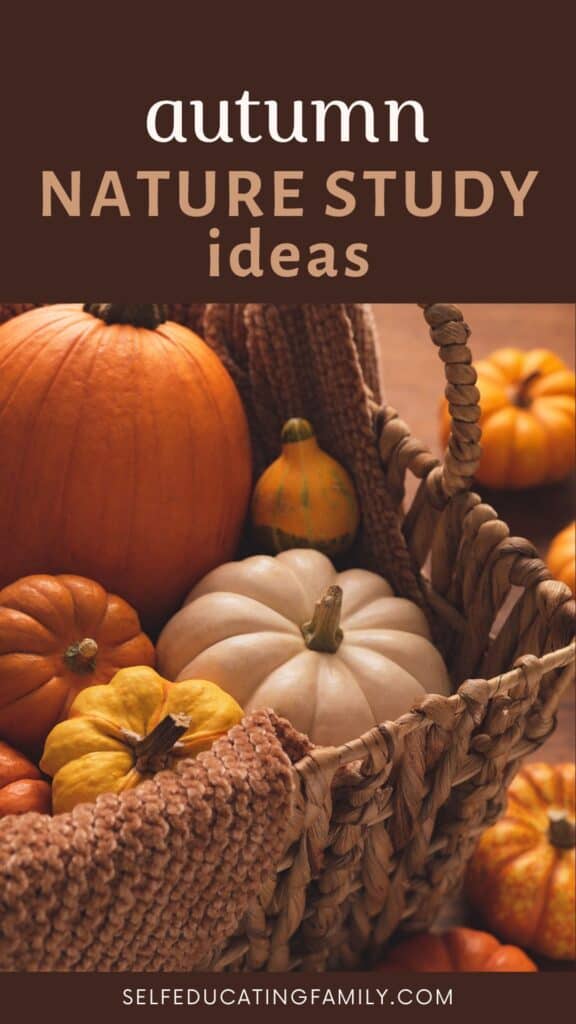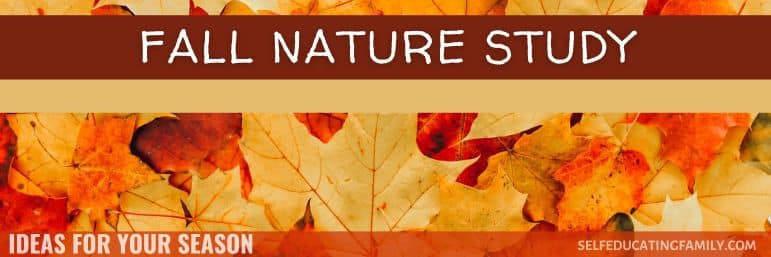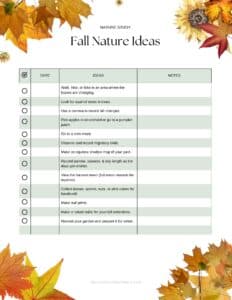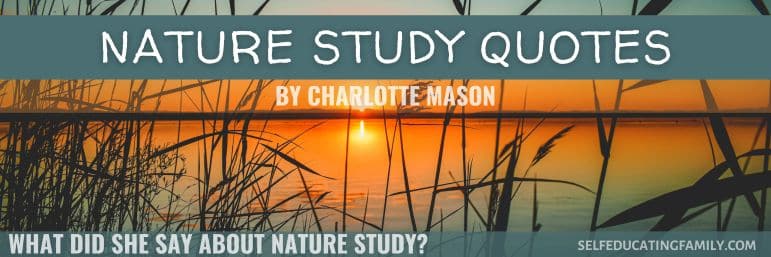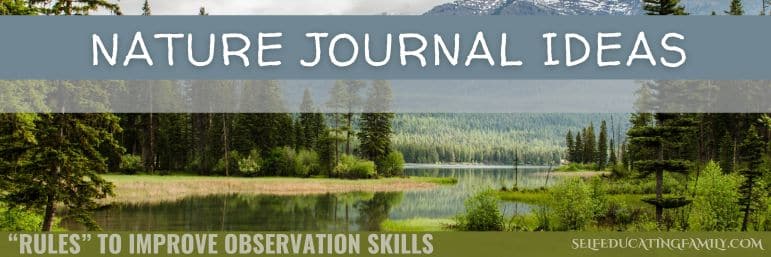What’s inside: Nature study is welcome any season, but fall presents unique opportunities. Grab a free checklist of ideas for fall nature study.
Fall Nature Study Ideas
Nature study is welcome year-round, winter, spring, summer & fall. But autumn brings special opportunities for adventure. Today, let’s look at fall nature study ideas.
The fall brings a delightful change of season, and we can set the stage for learning opportunities and observation by our kids with a few tips.
Disclosure: This post contains affiliate links, meaning that if you make a purchase after clicking through, SelfEducatingFamily will receive a small commission at no extra cost to you.
What’s unique about Fall?
If you think about fall, it brings change. That’s not surprising – each season brings its own changes. So what kinds of change does it bring?
What happens in the transition from Summer to Winter?
- Shorter days
- The fall equinox
- Lower temperatures
- Leaves fall
- Harvesting of crops
- Animals prepare for winter:
- gathering food
- migrating
- chickens molting
- Some dogs shed and grow their winter coat
- Firsts to look for
- First frost
- Leaves changing color
- The Harvest Moon
- Falling seeds: acorns, maple seeds, nuts from nut trees.
How can we focus on Fall Nature Study?
Take your year-round activities and put a fall slant on them. Here are some ideas:
Walks & Hikes
- Take your nature walk in an area where you know the leaves are changing.
- Plan a hike or bike ride where the leaves are changing – hikes can often take you closer into forests or vistas.
- As the trees drop their leaves, see if you can find any squirrel nests.
- Bring a camera on your local nature walks to record the differences for this season.
Field Trips
- Plan a field trip to a you-pick apple orchard or pumpkin patch.
- Plan a field trip to a corn maze.
- Locate the great migratory patterns and see if you are in any of the flyways. Visit a local pond or natural area to observe waterfowl, migratory birds, or butterflies.
Weather Observations
- Make an equinox shadow map of your yard. You can use these to plan your garden in the spring if you keep a record of all equinox & solstice shadow maps.
- Record the sunrise and sunsets for the season.
- Take note of the harvest moon – it’s the full moon closest to the equinox. A full moon rises about when the sun sets. Both sun and moon rise in the east (more or less, but on the equinox, more so). Near the equinox, the harvest moon moon will rise near sunset for a few days and it will be large and VERY visible (if you don’t have cloud cover).
Collections and Journaling
- Collect leaves, acorns, or pine cones for handicraft.
- Make leaf prints in your nature journal by putting the leaf on one side of your paper and pressing down and coloring over the leaf. The leaf outlines and veins should appear if your paper is thin enough.
- Make a nature table with seasonal items.
Gardening
- If you have a garden, what can be harvested?
- Do you have a fall garden? Do you have time to plant one?
- Will you be sowing a fall/winter cover crop?
- How do you prepare your garden for winter?
- Can you overwinter any of pepper plants or herbs?
Fall Nature Journal Prompts
- Which trees change leaf color first?
- Which trees are marcescent? That means old & withered – and it refers to leaves that start shriveling and drying without falling off. But you shouldn’t use it in a sentence like, “My, you are looking marcescent today!”
- Which trees don’t change color and don’t drop their leaves or needles in fall (coniferous trees vs. deciduous)?
- Make observations about your neighborhood or yard – what changes happen in fall?
- Make a day-length chart – how many hours of sunlight do you have today?
- Make individual leaf observations: What color is my leaf? What shape? What types of edges?
Fall Nature Handicrafts
There are a number of fall-related handicraft ideas that you can do to bring nature study closer! Here are some ideas.
Birds and Feeders
If you have a feeder, get it stocked for the late fall. The birds usually do well in the harvest season, but as the leaves get thinner and the berries get fewer, your local birds that DON’T migrate will start looking for their preferred feeders and waterers.
- Rainy Day Mum has some wonderful bird food recipes you can try.
- You can build a simple bird feeder. Backyard Garden Lover has a number of excellent and easy ideas.
- For more ideas, check out Natural Birdhouses (uses free, local, natural materials to create really unique bird houses and more).
- If you’d like more challenge, Easy to Build Birdhouses gives clear directions for elegant but simple designs.
Fall decorations
Wreaths or fall centerpieces come to mind when you think of fall decorations.
Gather your fall items and use them in one of these crafts.
- Hearth & Vine has a step-by-step tutorial for making your own fall wreath.
- The Craft Patch shows you how to laminate a placemat of dried pressed leaves.
Harvest Flowers
You can harvest some of your fall flowers to press and dry. Use them for notecards or small picture studies in frames to give as gifts.
You can even use your flower press to press leaves that you want to preserve! The key with drying leaves is to be on the lookout for that most beautiful leaf every time you go out on your nature walks.
Final Thoughts
I hope this gives you some ideas on fall nature study. Each season brings its unique flavor to your days if you let it. And each day brings its own delights.
Keep on Learning
If you would like more ideas for nature journaling, then try my One-Week Challenge: Get Outdoors with Nature Study.
Get the One-Week Video Nature Study Challenge!
In just 5 days, you can jump start your nature studies & using a nature journal with easy habits and routines from this course. Special launch pricing now!
Related articles
Other resources
- Fall Nature Study | Simple Living Mama
- Autumn Nature Activities for Toddlers | Rainy Day Mum
- Fall Nature Table | Rhythms of Play
